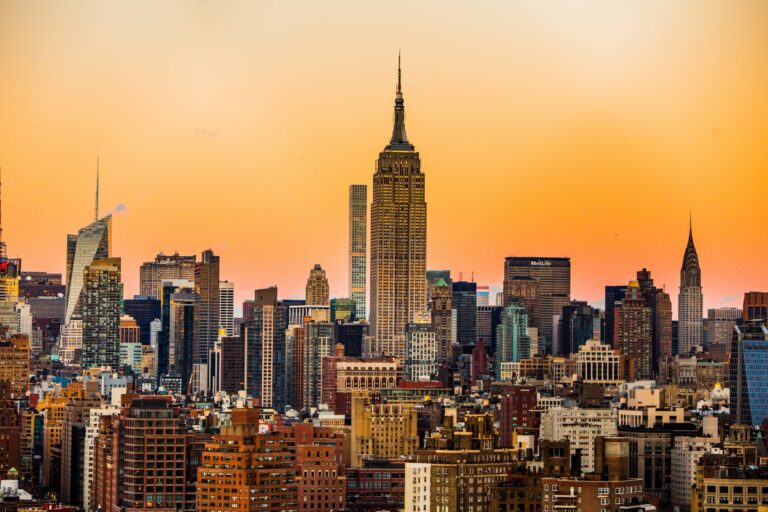New York City, traditionally viewed as the heart of the commercial real estate world, is currently grappling with a slowdown in its office market as the effects of remote and hybrid work models continue to take hold. According to the Real Estate Board of New York (REBNY), office leasing activity dropped by 8% in the final quarter of 2024, marking a continuation of the downward trend that began after the pandemic. This shift has raised concerns about the long-term viability of the city’s office space market and could signal lasting changes for the industry.
Declining Demand in Manhattan’s Central Business District
The drop in office leasing activity is particularly pronounced in Manhattan’s Central Business District (CBD), an area that has long been synonymous with high-end office buildings and corporate headquarters. With remote work becoming increasingly popular, many companies no longer require the vast office spaces they once occupied. As a result, numerous office buildings in prime locations are sitting vacant for longer periods than expected. While the vacancy rates in the CBD are concerning, they also reflect broader trends in how businesses are reassessing their physical office space needs.
High-end office spaces that were once seen as a status symbol are now facing increased difficulty in attracting tenants. Companies, especially those in industries like tech and finance, are opting for smaller, more flexible office footprints or entirely remote work arrangements. This shift has created a surplus of empty office space, leading landlords to explore alternative options for their properties.
The Rise of Mixed-Use Developments
In response to the decline in demand for traditional office space, some large landlords are beginning to rethink their strategies. A growing number of property owners are considering converting office buildings into mixed-use developments, which combine residential, retail, and office spaces. This shift is aimed at maintaining the relevance of office buildings while adapting to the new realities of urban living and working.
Mixed-use developments can offer a solution to the growing demand for more affordable housing in the city, while also ensuring that office buildings remain functional and profitable. In addition to residential units, these developments could include retail spaces, restaurants, and even coworking hubs to attract businesses seeking flexible work environments. By repurposing office buildings in this way, landlords can not only mitigate the effects of a slowing commercial market but also contribute to the regeneration of neighborhoods.
Tech Companies Downsizing Office Space
Another significant trend contributing to the slowdown in New York’s office market is the increasing number of tech companies choosing to downsize their office footprints. As more companies embrace hybrid or fully remote work models, they are finding that they need significantly less physical office space. This is particularly true for tech firms that have embraced digital collaboration tools and a flexible workforce, allowing employees to work from anywhere.
For many of these companies, the decision to reduce their office space is both a cost-cutting measure and a reflection of changing attitudes toward work. The need for large, centralized office spaces has diminished, as employees can now perform much of their work remotely. As tech companies continue to adjust their office space requirements, this trend may have lasting effects on demand for traditional office buildings in New York City and other major metropolitan areas.
Long-Term Implications for New York’s Real Estate Strategy
The long-term effects of these changes could be profound for New York’s real estate market and urban planning. As office demand continues to shrink, developers will need to pivot quickly to focus on adaptive reuse projects and urban regeneration to keep up with shifting market demands. The future of commercial real estate in New York may no longer be solely centered around office buildings, but also involve creating dynamic, mixed-use spaces that cater to a variety of needs.
This shift may also lead to a reevaluation of the city’s skyline. Iconic office towers, which have long been a defining feature of New York’s architecture, may need to be repurposed or redesigned to accommodate the demands of the modern workforce. The city’s commercial real estate landscape could evolve into a more diversified and flexible model, one that integrates residential, retail, and business spaces to create vibrant, multifunctional neighborhoods.
Shifting Demand Across the U.S.
New York is not the only city seeing these shifts in commercial real estate. As companies continue to embrace remote and hybrid work environments, other cities across the U.S. could experience increased interest in commercial properties that cater to these new work models. Cities with lower living costs, strong tech ecosystems, and growing infrastructure could see a rise in demand for office space that supports flexible work environments. This could lead to a redistribution of commercial real estate activity across the country, with new hubs emerging outside traditional urban centers.
Conclusion: A Changing Real Estate Landscape
As New York City’s office market continues to adjust to the realities of remote and hybrid work, the city’s commercial real estate strategy will need to evolve. The shift towards mixed-use developments, the downsizing of office footprints by tech firms, and the broader rethinking of urban space could permanently reshape New York’s real estate landscape. Developers and landlords will need to act quickly to stay ahead of these changes, embracing adaptive reuse and urban regeneration to maintain the city’s status as a global hub for business and innovation. In the long run, this transformation could lead to a more flexible, dynamic, and sustainable real estate market in New York and across the U.S.
